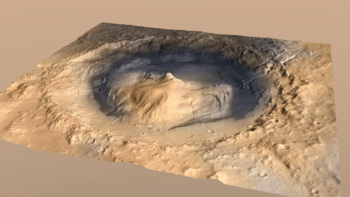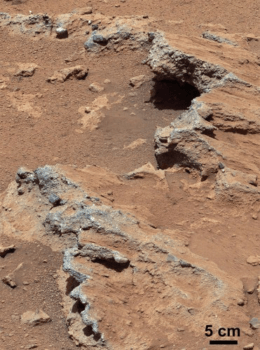Mars Has Had A Very Wet Past

Although they are no longer there, large lakes and river systems were once plentiful on Mars before they dried up billions of years ago, says a team of international scientists that includes a Texas A&M University researcher.
Ryan Ewing, assistant professor of geology and geophysics, and colleagues have had their work published in the current issue of Science magazine.
Their work provides further evidence of water on Mars.
In a separate study, NASA announced last week that there is firm proof that Mars still has areas of flowing water during its summer months, raising the possibility that the planet could be home to some form of life.
The flowing water shows up intermittently and is not constant, and appears to ebb and flow according to Mars’ seasons.

Ewing and team members looked at areas in and around Gale Crater, a 96-mile-wide crater with a central mountain that rises about 18,000 feet above the Martian terrain. The team found that a complex river system was present throughout much of the area, and existed there “probably on and off for tens of thousands of years,” Ewing explains.
“But for reasons we don’t know, after the river and lake sediments were deposited, which occurred before 3.3 billion to 3.2 billion years ago, most of the water dried up. The project shows what we have long suspected: Mars had a sustained period of relative wetness in its past.”
The researchers found that water pooled into lakes in several regions, and the planet’s past climate must have been much wetter than it is today.
The team examined thousands of photos taken by the Mars rover Curiosity, which landed on Mars Aug. 6, 2012, and these images gave strong evidence that rivers and lakes were common in Gale Crater.
One of the questions the team answered dealt with Mars’ winds and their effects on the area.
“We did find evidence of wind-driven erosion in Gale Crater,” Ewing adds.
“This occurred about 3.3 to 3.1 billion years ago, and this was followed by a long, slow period of erosion that has continued to this day. We found that wind, not water, was the primary cause of erosion in the area.”
The project was funded by NASA.
Media contact: tamunews@tamu.edu.





